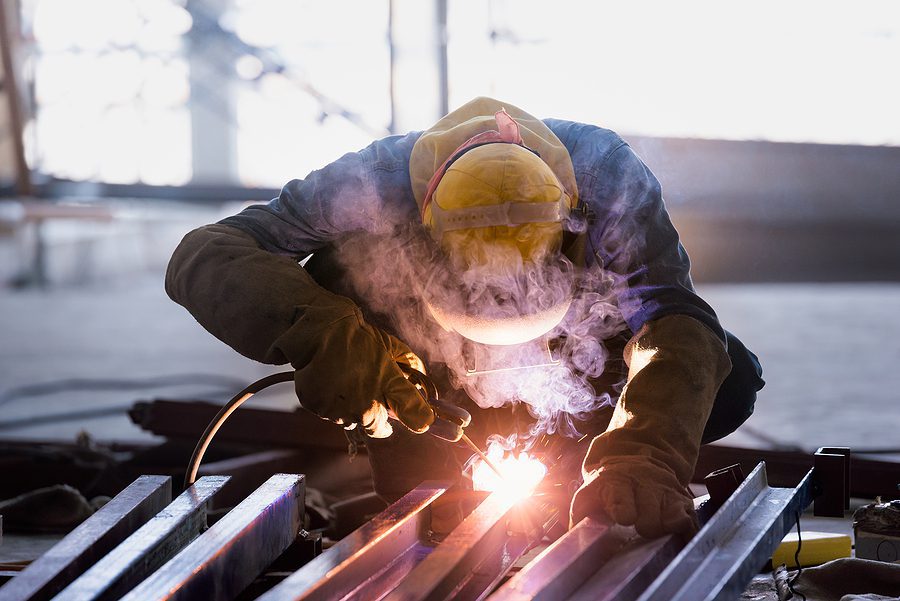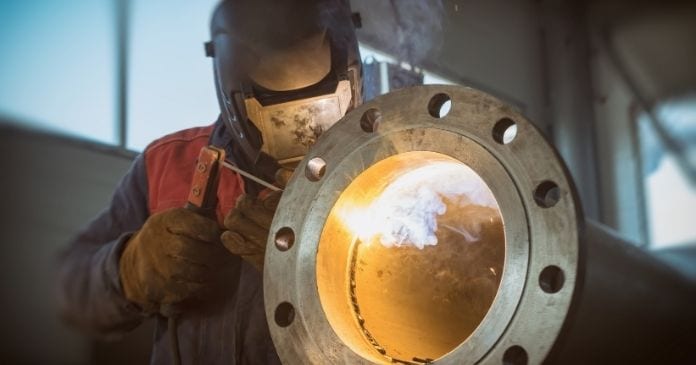Usual Welding Fixing Issues and Just How to Address Them Successfully
Welding repair services often run into a variety of concerns that can endanger the integrity of the end product. Common problems consist of poor infiltration, porosity, and misalignment, amongst others. Each flaw provides special obstacles that call for details approaches for resolution. Comprehending these concerns is vital for welders intending to improve their abilities and outcomes. This conversation will discover these common welding fixing problems and reliable techniques to resolve them.
Poor Penetration
Inadequate infiltration takes place when the weld steel stops working to completely fuse with the base product, causing weak joints and prospective structural failures. This issue typically originates from not enough warm input, incorrect electrode angle, or incorrect welding speed. Welders might run into poor infiltration because of a miscalculation of the required criteria for a particular material density or kind. Furthermore, contamination on the base product's surface can prevent efficient bonding, aggravating the trouble. To address inadequate infiltration, welders must ensure ideal settings on their equipment and keep a tidy work surface. Regular evaluation of welds is advised to identify any deficiencies early, permitting prompt adjustments and the avoidance of endangered structural integrity in welded assemblies.
Porosity
Porosity is a common problem in bonded joints that materializes as small gas bubbles entraped within the weld steel. This defect can compromise the integrity of the weld, resulting in decreased toughness and prospective failing under stress. Belgrade Fabrication. Porosity typically emerges from contamination, dampness, or inappropriate welding techniques, which enable gases to leave into the liquified weld pool. To attend to porosity, welders need to guarantee proper surface preparation, keep a clean working environment, and use suitable welding specifications. In addition, selecting the right filler material and securing gas can minimize gas entrapment. Routine evaluation and screening of welds can assist determine porosity early, guaranteeing prompt rehabilitative activities are taken, therefore maintaining the high quality and reliability of the welded structure
Imbalance
Misalignment in welding can emerge from different aspects, consisting of inappropriate setup and thermal growth. Comprehending the source is essential for efficient resolution. Several improvement methods are available to straighten elements and guarantee structural honesty.
Causes of Imbalance
Welding misalignment typically originates from a selection of underlying problems that can endanger architectural stability. One main cause is improper fit-up of parts prior to welding, which can lead to spaces and unequal surface areas. Variations in thermal expansion throughout the welding process can likewise lead to distortion, particularly if the materials being joined have various coefficients of growth. In addition, insufficient clamping and fixturing might stop working to hold parts safely in place, causing motion throughout welding. Improperly conserved equipment, including welding devices and tools, may present incongruities in the weld bead, further adding to imbalance. Ultimately, driver mistake, coming from not enough training or experience, can likewise play a substantial function in creating misaligned welds.
Adjustment Methods Readily Available
Resolving misalignment effectively requires a mix of rehabilitative strategies tailored to the details issues handy. One typical method is using jigs or fixtures to hold parts in the proper placement during welding, ensuring regular alignment. Additionally, preheating the products can assist lower distortion and improve fit-up. For considerable misalignment, mechanical realignment strategies, such as using hydraulic jacks or clamps, can be employed to fix the position before welding. Post-weld warm treatment may additionally be required to soothe anxieties caused by imbalance. Finally, mindful evaluation and adjustment during the configuration phase can protect against imbalance problems from coming to be considerable issues, promoting a smoother welding process and enhancing overall architectural honesty.
Distortion
Distortion is a typical challenge in welding that can develop from numerous factors, consisting of irregular cooling and heating. Understanding the reasons for distortion is important for executing reliable avoidance techniques. Resolving this concern not only improves structural integrity however additionally boosts the total quality of the weld.
Causes of Distortion
When subjected to the intense heat of welding, materials usually go through modifications that can cause distortion. This phenomenon mostly emerges from thermal growth and tightening during welding aluminum to steel the welding process. As the weld area warms up, the material expands; upon air conditioning, it contracts, which can develop interior anxieties. Furthermore, unequal heating across a work surface can worsen these stress and anxieties, resulting in bending or bending. The kind of material likewise plays a significant function; steels with varying thermal conductivity and coefficients of development might react in different ways, resulting in unforeseeable distortions. Moreover, bad joint layout and inadequate fixturing can add to imbalance during welding, increasing the probability of distortion. Comprehending these reasons is important for reliable welding repair service and avoidance techniques.
Avoidance Techniques
Effective avoidance methods for distortion during welding concentrate on controlling warmth input and guaranteeing appropriate joint design. Maintaining a regular warmth input assists to minimize thermal expansion and tightening, which can bring about distortion. Making use of techniques such as preheating the workpiece can additionally reduce the temperature level gradient, promoting uniform heating. In addition, selecting appropriate joint layouts, such as T-joints or lap joints, can boost stability and lower stress and anxiety concentrations. Executing appropriate fixturing to news secure the workpieces in place additionally aids in maintaining placement during the welding procedure. Staggered welding series can distribute warmth extra evenly, avoiding localized distortion. By applying these techniques, welders can considerably lower the possibility of distortion and enhance the general quality of their welds.
Cracking
Cracking is a typical issue encountered in welding fixings, commonly resulting from different elements such as improper air conditioning rates, product choice, or insufficient joint preparation. The occurrence of cracks can considerably jeopardize the stability of the weld, resulting in potential failures throughout operation. To address this issue, welders should initially analyze the origin creates, making sure that materials work and suitably selected for the particular application. In addition, managing the cooling price during the welding procedure is essential; rapid cooling can generate stress and result in fracturing. Appropriate joint layout and preparation additionally add to minimizing the threat. Applying these techniques can boost weld top quality and resilience, ultimately lowering the chance of breaking in ended up weldments.

Insufficient Blend
A considerable concern in welding repairs is insufficient blend, which happens when the weld metal does not adequately bond with the base material or previous weld passes - Montana Mobile Welding and Repair Fabrication. This issue can result in weaknesses in the joint, potentially compromising the stability of the welded framework. Aspects contributing to incomplete combination include insufficient warmth input, incorrect welding method, and contamination of the surfaces being joined. To address this problem properly, welders must ensure appropriate pre-weld cleaning and surface prep work, along with adjust their welding parameters to attain ample infiltration and blend. Routine evaluation throughout the welding process can also help identify incomplete blend early, permitting timely corrective procedures to improve the total quality of the weld
Overheating
While welding linked here repair services can boost structural honesty, overheating offers a considerable obstacle that can result in product degradation. Excessive heat throughout welding can change the mechanical homes of metals, leading to decreased toughness, raised brittleness, and bending. This sensation is particularly essential in high-stress applications where architectural integrity is paramount. Identifying overheating can include visual assessments for discoloration or distortion, in addition to keeping track of temperature throughout the welding process. To minimize the dangers associated with overheating, welders ought to utilize suitable strategies, such as regulating warmth input, adjusting traveling rate, and utilizing appropriate filler materials. In addition, carrying out pre- and post-weld heat treatments can aid restore material residential or commercial properties and enhance the total high quality of the repair work, ensuring long-lasting efficiency and safety and security.
Regularly Asked Concerns
What Are the Usual Indications of a Welding Defect?

How Can I Test My Welds for High quality?
To evaluate welds for high quality, one can utilize visual assessments, ultrasonic screening, and radiographic approaches. Each strategy ensures architectural integrity, identifies problems, and confirms adherence to defined standards, eventually improving the integrity of the welded joints.
What Safety Safety Measures Should I Take While Welding?
When welding, one should focus on safety by wearing ideal individual safety devices, guaranteeing proper air flow, securing flammable products away, maintaining a tidy work area, and recognizing surroundings to protect against crashes and injuries.
Can I Repair a Weld Without Redoing the Entire Joint?
Fixing a weld without redesigning the entire joint is feasible, depending upon the damages (Fabrication). Methods such as grinding, adding filler product, or using a welding procedure can efficiently resolve particular problems while preserving the surrounding structure
What Devices Are Necessary for Effective Welding Fixes?
Essential devices for efficient welding fixings include a welding equipment, wire brush, mill, protective gear, clamps, and filler materials. Each tool plays an important duty in guaranteeing high quality and safety during the repair procedure. Porosity normally emerges from contamination, wetness, or inappropriate welding strategies, which allow gases to run away into the liquified weld pool. Badly maintained equipment, including welding machines and devices, may present inconsistencies in the weld bead, further adding to misalignment. When subjected to the intense heat of welding, materials frequently go through changes that can lead to distortion. Splitting is a typical problem run into in welding repairs, frequently resulting from numerous factors such as improper cooling rates, material selection, or insufficient joint preparation. A significant issue in welding fixings is insufficient blend, which occurs when the weld steel does not properly bond with the base material or previous weld passes.
Comments on “Early defect indicators and what Belgrade can do about them”